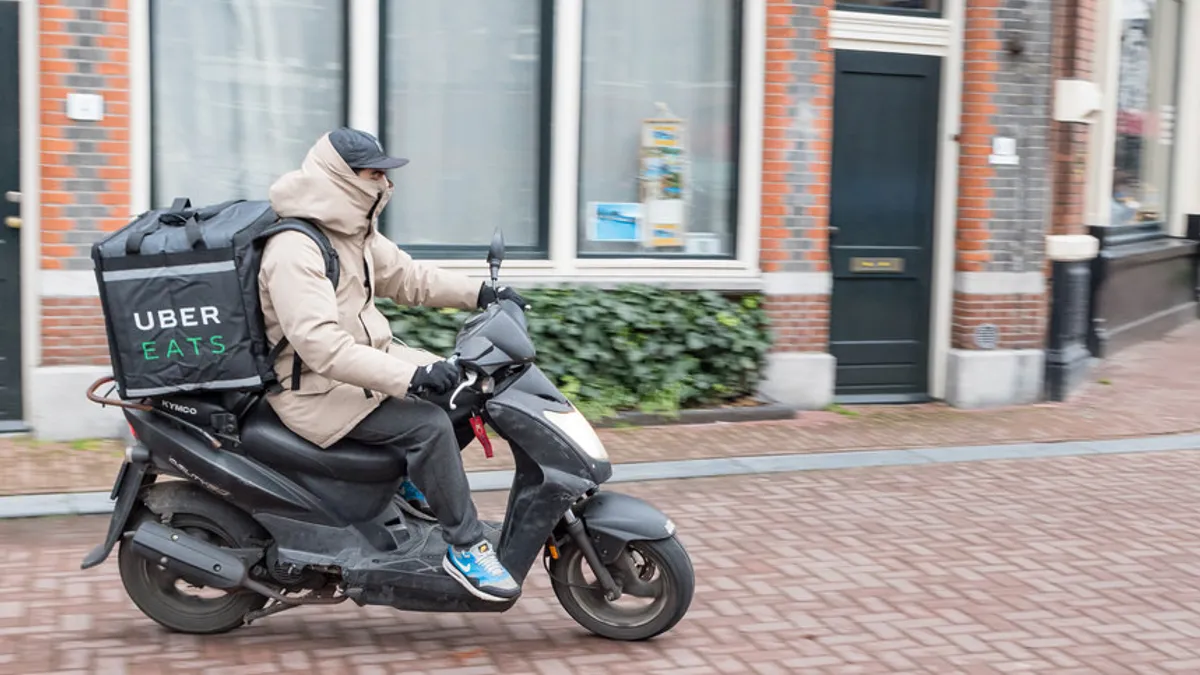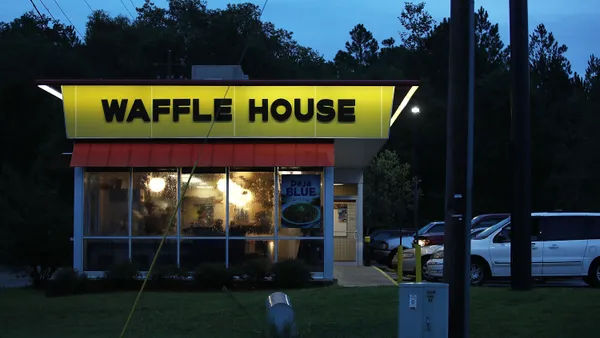Dive Brief:
- Uber announced Tuesday that is expanding its on-demand food delivery service, Uber Eats, to cover more than 70% of the U.S. population by the end of the year, according to Tech Crunch. This announcement comes on the heels of competitor Postmates’ announcement that it covers 60% of U.S. households.
- Uber Head of U.S. Cities for Uber Eats Ana Mahony told TechCrunch that Uber has been able to successfully introduce its brand to a broader marketplace through its Eats business, even in places where the ride-sharing service does not operate. Forty percent of new Eats users are new to Uber.
- Uber Eats is also launching a new self sign-up process for restaurants in an effort to make it easier for brands to become Uber Eats partners.
Dive Insight:
The race for household saturation for restaurant delivery proves that third-party aggregates such as Uber Eats, Postmates and GrubHub have seen enough demand to justify expansion. For Uber, increased saturation is also good for the company as it attempts to justify its $20 billion valuation.
With its latest announcement, Uber Eats is eyeing suburbs in response to demand in these markets, a trend that seems to surprise even the company’s leadership team. Rachel Jaye, Uber Eats general manager, told the Atlanta Business Chronicle: “I think we always thought, ‘We’ll get our customers that use the ride app, they’ll come over to Uber Eats. But actually what we’re seeing is more and more people are seeing the need for Uber Eats … I think we’re going to continue to see this as we expand to the suburbs.”
Uber Eats already has a major market share advantage simply through its partnership with quick-service giant McDonald’s. During Tuesday’s earnings call, McDonald’s CEO Steve Easterbrook outlined this mutual benefit: “We continue to move aggressively in developing delivery opportunities... We provide a distinct advantage by placing us closer to more customers than any of our competitors... With the benefit of our global partnership with Uber Eats, we are continuing this expansion.”
McDonald’s expects to have delivery rolled out to 9,000 U.S. restaurants by the end of the year.
Still, it’s likely hungry customers won’t care so much about Uber’s household saturation as they will how many food choices they have through the app and how easy it will be to get them. McDonald’s is certainly not the only brand taking advantage of Uber Eats’ growing footprint; expect even more brands to leverage the delivery service as the company simplifies its business through its new self-service feature.
Uber is looking to make its delivery service more accessible through this signup process, which allows restaurants to upload their menus, set up their account and start doing deliveries. This is perhaps the biggest takeaway from Uber’s announcement Tuesday. As the delivery wars continue to intensify, companies that find ways to make their services and their food options more accessible for both restaurant brands and their customers will emerge as the winners.












